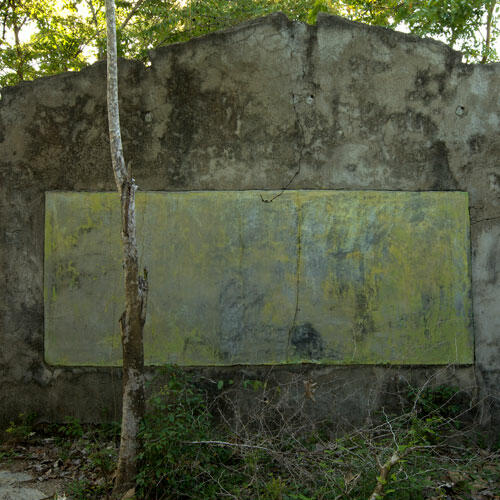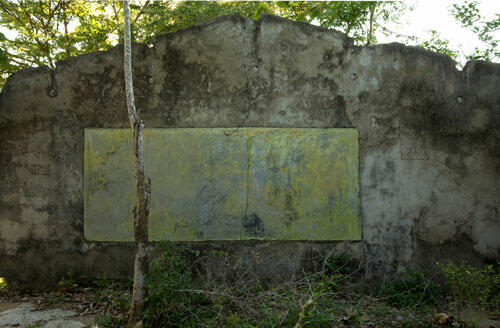Juan Manuel Echavarría
Sextante, Bogotá
One of the crudest examples of forced displacement in Colombia as a consequence of territorial fights is the one that occurred in the region of Montes de María, between the coastal departments of Bolívar and Sucre, in the north of the country, a strategic corridor for the passage of illegal drugs. And it is the village of Mampuján, in the heart of this zone, where Echavarría portrays the first blackboard in an abandoned school.

Once again, violence in Colombia marks the course of his work, a violence he resolves with poetic images in which the trace and the memory play a fundamental role. The title of the exhibition, which originates in the absence of the vocal “o” in one of the blackboards found in the Rural Mixed School of Mampuján, might present the paradox of incomplete education or the eternal circularity of violence in these rural areas, where the last thing that matters is their inhabitants.
Each photograph shows a blackboard literally devoured by the forest, each one of them is crackled, hurts, tells the same story, the history of displacement as a consequence of civil war established by the illegal groups fighting for the control of drug trafficking. In Silencio, each one sings its own pain and its own anguish, just like his singers do in the video Bocas de Ceniza (2004).
Two functions may be perceived in these works by Echavarría: the first, a documentary one, where each photograph endowed with a high emotional content, transmits the pain and the uncertainty of an abandoned space in particular; and the second, an artistic one, through which he establishes a parallel where the blackboard, instrument of education, is the only hope that conveys messages such as lo bonito es estar vivo. Double function that brings the work of this artist closer to limits that go beyond art, taking it to places proper of other disciplines of the human sciences, or vice versa.
-
 C-Print, Edition of 3 with 2 AP, 40 x 60 in. Courtesy Sextante Gallery. Impresión digital. Edición de 3 con 2 PA. 101.6 x 152.4 cm / Cortesía: Galería Sextante
C-Print, Edition of 3 with 2 AP, 40 x 60 in. Courtesy Sextante Gallery. Impresión digital. Edición de 3 con 2 PA. 101.6 x 152.4 cm / Cortesía: Galería Sextante




